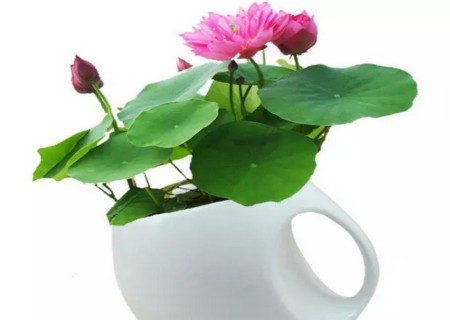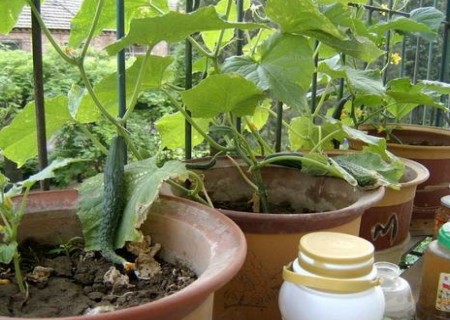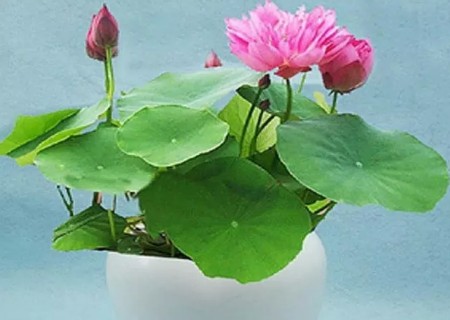Hydroponic culture method of lotus bowls
Bowl lotus, alias pot lotus, pot lotus, as the name implies, is the lotus planted in the bowl. It is a lotus flower planted in a bowl, specially for aging on several tables in the room, in order to beautify the living environment. Bowl lotus originated in Jiangsu, and Suzhou is the most famous. There are many records in Chinese ancient books. Now it is often used as a desk to watch plants, which can beautify the working environment.
The planting method of bowl lotus is different from that of ordinary flowers. Because the seeds of bowl lotus are relatively hard, they need to be treated with broken shells. I remember an article said that the seeds of ancient lotus flowers were found in a lotus pond. And you can see how strong the protective ability of the seed shell is! We analyzed the hydroponic culture method of bowl lotus step by step.

Step one:
For the planting method of bowl lotus, the first is to break the shell of the seed, the pericarp of lotus seed has a strong and thick special structure, after the seed is fully ripe and dry, the water and air are not easy to penetrate, the respiration is very slow, and is forced to dormancy. So lotus seeds can be buried in the soil for hundreds or even thousands of years without germination or decay, which is the reason for the longevity of lotus seeds. In order to make the lotus seeds absorb water and oxygen after sowing, break the forced dormancy and enter into germination and growth, the seeds must be treated with shell breaking before germination.
The bowl lotus is an anatropous ovule, and the germ is born at the top of the seed. When breaking the shell, the base end of the seed should be broken, that is, the end at which the seed is planted on the receptacle, that is, the sunken end of the lotus seed. It can be broken with scissors or pliers. Generally speaking, before sowing, as long as the pericarp (that is, the hard shell of the lotus seed) is worn, the brown seed coat is seen; when the shell is clamped, there is only a 2mm crack at the base, do not clip it too deep, so as to avoid damaging the embryo. After one day of seed soaking, when the embryo expands and the pericarp becomes soft, the peel can be peeled off by hand along the broken shell to expose the embryo to facilitate the elongation of the germ. It must be noted that the broken shell should not be too large. If the hard shell of the lotus seed is removed, the germ will lose its protection and rot easily. This is the first step in the planting method of bowl lotus.
Step two
Soak the seeds to accelerate germination and soak the broken seeds in warm water of about 50 degrees. The water of soaking seeds should be clean, free of grease and dirt, and do not use water higher than 50 degrees, otherwise it will affect germination. The water temperature drops naturally and is kept at about 30 degrees at last, not higher than 40 degrees or less than 20 degrees. If the water temperature is higher than 40 degrees, the seeds germinate rapidly on the first day, but the growth is inhibited later. when the water temperature is lower than 20 degrees, the seeds germinate and grow too slowly. When soaking a small amount of seeds in the family, it can be put into a thermos to keep warm. Under the condition of temperature of 30 degrees, generally soaking seeds to accelerate germination for 3 days, the germ protrudes from the break.
During this period, the water needs to be changed one or three times a day, and the seeds that cannot germinate should be removed in time. Under normal circumstances, seeds that have not germinated for seven days will no longer germinate. Seeds that do not have the ability to germinate tend to float on the water, the germ is yellow, and the cotyledons are moldy and smelly. (you can also soak the seeds directly with tap water. There is no need to use warm water or heating. The seeds can germinate in about two days. ) this is the second step in the planting method of bowl lotus.
Step three
The seeds should be cultured in water for 5-7 days under the condition of about 25 ℃ after emergence. During the period of hydroponic cultivation, the root absorption of lotus seedlings is weak, and their growth mainly depends on seed embryos to provide nutrients, and generally does not need fertilization. In the process of hydroponic cultivation, the depth of the water layer should be kept at about 10 cm, and sufficient light should be given; it is not appropriate to change water or turn frequently, so as to avoid excessive elongation of leaves due to frequent changes in their growth direction; petioles should be kept in water and leaves spread freely on the surface of the water. When the first leaf is released and the second leaf is about to release and grow white roots, it can be planted.
The fourth step
It is planted, and when the buds grow to 10CM or so, they can be transplanted. According to the needs of bowl lotus planting, choose the soil into the flower bowl, put in the water, and mix the soil and fertilizer evenly. After the muddy water is clarified, the water-cultured seedlings are planted in the center of the flower bowl, with all the seeds in the mud, so that the leaves can stretch freely on the surface of the water. When transplanting, it should be noted that the petiole should not be broken so as not to affect the growth.
Keep 3-5 cm water layer after planting, but do not submerge the leaves. The bowl of lotus likes the light, and the flower bowl should be placed in a place with plenty of sunshine. The seedlings are delicate and some will scorch when the sun burns, but they will generally sprout and survive. Don't water too much to raise the temperature of the water and promote growth. Standing leaves can appear after 7-13 floating leaves are grown. Generally speaking, multi-flowered varieties can appear buds after growing 5-17 standing leaves. The bud appears sooner or later, depending on the variety, and some varieties bloom before the standing leaves grow.
Graceful and graceful bowl lotus, small and chic, elegant design, one or two small fish cruising during it, very interesting. Key points of hydroponics:
1. Add half a basin of pastoral soil or river pond mud to the basin and soak it with water two weeks in advance. Do not apply fertilizer.
2. Press the fine root of the seedling into the mud, and the depth of adding water will not drown the lotus leaf.
3. Spread sand evenly in several times to make the water clear.
4. Raising small fish in water can get rid of insects, and feces can also be fertilized.
The flowering period of bowl lotus is in the middle of summer, and it is in the off-season of flowers, which well fills the gap of flowers. Keep a bowl of lotus on several shelves, do not have some interest, bowl lotus is very popular in the market in recent years, fashionistas can not be missed.
Time: 2019-05-24 Click:
- Prev

Planting techniques of potted cucumber on balcony
It is every flower friend's wish to love green and be close to nature. I believe everyone has their own beloved potted plants. We like the atmosphere of foliage plants, the beauty of foliage flowers, and the simplicity and elegance of bonsai. In fact, except for these potted plants that watch flowers and leaves.
- Next

Diagram of how to plant lotus seeds
Bowl lotus, also known as white lotus, is a perennial aquatic herbal flower. It has high ornamental value, blossoms from June to September every year, and the most suitable growth temperature is 20-30 degrees Celsius. In the hot summer, raise a pot of elegant bowl lotus at home to drive away the hot heat easily. Summer is coming.
Related
- Fuxing push coffee new agricultural production and marketing class: lack of small-scale processing plants
- Jujube rice field leisure farm deep ploughing Yilan for five years to create a space for organic food and play
- Nongyu Farm-A trial of organic papaya for brave women with advanced technology
- Four points for attention in the prevention and control of diseases and insect pests of edible fungi
- How to add nutrient solution to Edible Fungi
- Is there any good way to control edible fungus mites?
- Open Inoculation Technology of Edible Fungi
- Is there any clever way to use fertilizer for edible fungus in winter?
- What agents are used to kill the pathogens of edible fungi in the mushroom shed?
- Rapid drying of Edible Fungi

